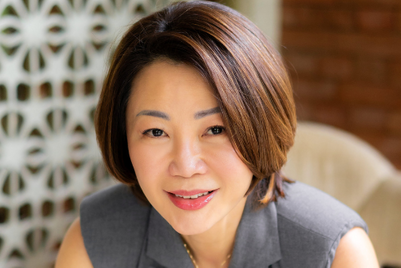
There is something in the air in Asia that is fertilising an increasing number of ‘little tigers’ or niche brands. And it would seem that it’s a consumer appetite for brands that go against the norm.
Take Banyan Tree Hotels and Resorts. It was born because it went against the current convention that a hotel must have a beach. Founder Ho Kwon Ping built a hotel with villas rather than rooms, each with their own swimming pool. His originality didn’t always sit well with others. Consultants refused to accept that the tropical spa could be adapted for Asia from the European model and they quit in exasperation.
Luca Deplano, VP of marketing at Banyan Tree explains: “Since its origins, Banyan Tree has not been afraid to be unconventional. Asia is still very much part of our brand’s DNA despite the fact we have become an international company.”
Stephen Cranston marketing activist at Renegade Challenger Marketing points out that in fact brands that go against global or even local convention are those most likely to succeed. “Banyan Tree found success by being contrarian,” he says.
One Malaysia-based branding consultant also puts the success of niche brands in Asia down to changes in the marketing environment and consumer sophistication. “The seminal phrases that shape marketing come from Coca-Cola. A decade ago the mantra was ‘think global’, five years later that changed to ‘think global, act local’, and now it is all about the future being in ‘high-margin niche brands’,” he says. “That is a fundamental change of philosophy, indicating an understanding that the more fragmented and sophisticated consumers will no longer buy the old strategy.”
Meanwhile, Mario Braz de Matos, principal of Nina Matos Boutique Consultancy Services, says niche brands work so well in Asia because there isn’t a lot of heritage or brand building, therefore challenging convention isn’t too hard.
He points to Singaporean based Chocolate Research Facility that has taken on leading global players such as Cadbury by leveraging on its passion for chocolate. “It’s a brand with 100 flavours of chocolate, including its unique tea flavoured chocolate. It chose not to go through mainstream retail, instead opening its own stores.”
Indeed, limited distribution is often cited as a strong reason for niche brands’ success. When the brand starts showing up everywhere, consumers perceive it has lost its cache, and they lose interest. As the brand gathers dust on retail shelves, heavy promotional activity and discounting follow simply providing the nails in the coffin.
Elsewhere in Malaysia, revered niche brands such as Aesop and Laura Mercier spotted a gap in the market for more sophisticated beauty brands. Prior to their entrance in the market, the cosmetics scene there was totally ruled by department-store and mass-market brands.
It’s a similar story in Indonesia where smaller beauty brands set up by entreprenuers have taken off. Roslyn Queeley, stategic planning director at 3 Acres and a Cow, a marketing consultancy specifically for SMEs and family businesses, points to a brand called Lipotomy — a treatment whose mantra was ‘results of lyposuction without the surgery’. “The brand took a public relations-only launch strategy and had a very targeted approach to reach a very high earning network in South Jakarta,” Queely explains. And it paid off. Lipotomy’s outlay costs were a mere US$11 per customer who each spent $90 per visit to Lipotomy’s clinic.
So what has led to the mushrooming of these and other niche brands?
In markets like Singapore the government actively encourages niche brands and offers 70 per cent funding to entrepreneurs. It recognises that consumers in Singapore want something more personal, and it’s these brands Singapore will export to the world in future. However, this is not a region-wide sentiment. In Indonesia the government doesn’t really understand branding, but companies are entrepreneurial. Queely reinforces this. “Over 90 per cent of businesses in Indonesia are entrepreneurial, but the government hasn’t done anything about it because people are very self-sufficient here.”
This article was originally published in the May issue of Campaign Asia-Pacific.



.jpg&h=334&w=500&q=100&v=20250320&c=1)


.jpg&h=334&w=500&q=100&v=20250320&c=1)




+(900+x+600+px)+(3).png&h=334&w=500&q=100&v=20250320&c=1)




.png&h=268&w=401&q=100&v=20250320&c=1)

.jpg&h=268&w=401&q=100&v=20250320&c=1)
